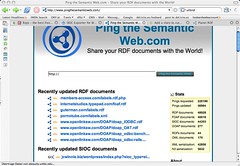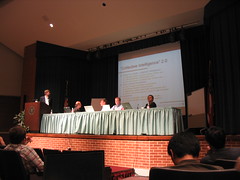summary of ISWC2006
I have written a summary about ISWC2006 for www.semantic-web.at.
you can find the article here.
|
leobard - 20. Nov, 10:12
|
|
|
leobard - 20. Nov, 10:12
|
|
|
leobard - 17. Nov, 13:53
|
|

|
leobard - 15. Nov, 09:05
|
|

|
leobard - 13. Nov, 17:00
|
|
You're right in there is an information gap that needs to be closed by a (proposed) „how to use Semantic Web for dummies“-site. I for my part consider myself an interested amateur. I had no problems following the W3C through their HTML and XML technologies. When I first read about RDF and the semantic web, I was excited; it was only 2 days later that I hat set up a FOAF file und tried to push my limits in this field.
The frustration came when I got into the details of URIs. Its fun to read in the mailing lists how the RDF-gurus think its the XML serialization that scares people off. I don't think it is. I think it's the vague concept of "anything is a URI", which in turn means "a URI means nothing". I for my part never found an answer to all the questions that evolve around the URI-thing… and eventually stopped following RDF as a technology.
I would very much appriciate a „Semantic Web for dummies“ (or „RDF for dummies“) site that does not only close the gap between the Guru-talk on the mailing lists and those who want to use the technology, but also provides some low-level forums/chats/... where people like me could get their questions answered.

|
leobard - 5. Nov, 15:14
|
|
via?